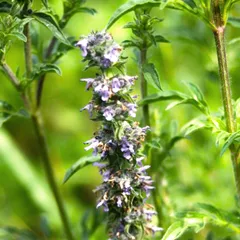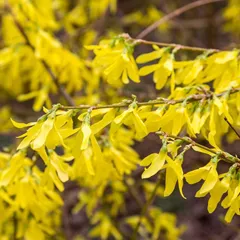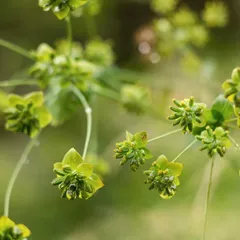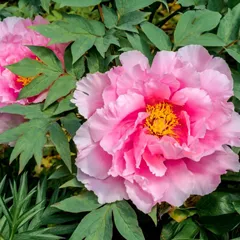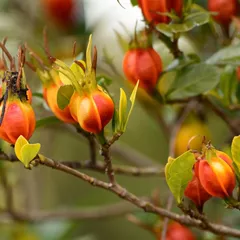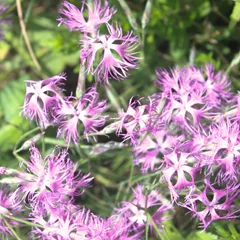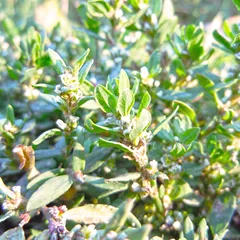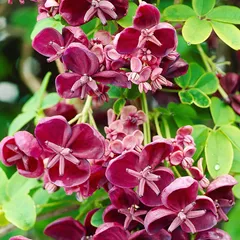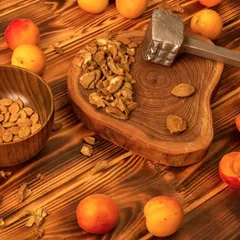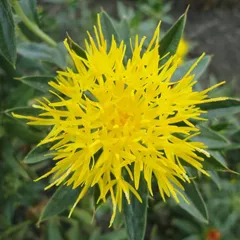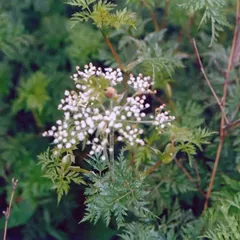Long Dan Xie Gan Tang
Long Dan Xie Gan Tang
Chinese: 龙胆泻肝汤
Pinyin: Lóng Dǎn Xiè Gān Tāng
Other names: Gentian Decoction to Drain the Liver, Gentiana Combination
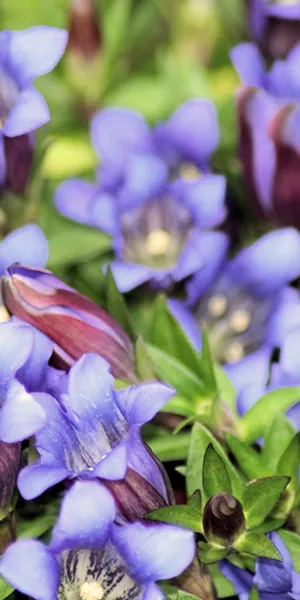
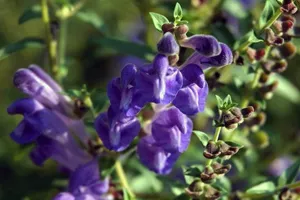
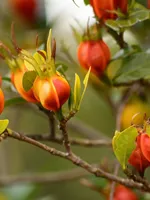
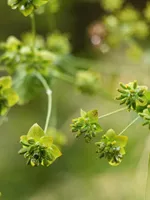




Long Dan Xie Gan Tang
Long Dan Xie Gan Tang
Chinese: 龙胆泻肝汤
Pinyin: Lóng Dǎn Xiè Gān Tāng
Other names: Gentian Decoction to Drain the Liver, Gentiana Combination
Number of ingredients: 10 herbs
Formula category: Formulas that clear Heat from the Organs
Conditions for which it may be prescribed: EczemaRhinitisVulvitis and twenty one other conditions
- Clears Heat and Fire from the Liver and Gallbladder
- Clears and drains Damp-Heat from the Lower Burner
Contraindications: Contraindicated for long term use or in large doses, nor in cases of Spleen... Contraindicated for long term use or in large doses, nor in cases of Spleen Deficiency or injury to the Fluids, because this formula can harm the Spleen. see more
Source date: 1682 AD
Source book: Medical Formulas Collected and Analyzed
The information provided here is not a replacement for a doctor. You shouldn't use it for the purpose of self-diagnosing or self-medicating but rather so you can have a more informed discussion with a professional TCM practitioner.
Long Dan Xie Gan Tang is a 10-ingredient Chinese Medicine formula with Chinese Gentian (Long Dan Cao) as a principal ingredient.
Invented in 1682 AD, it belongs to the category of formulas that clear Heat from the Organs. Its main actions are: 1) clears Heat and Fire from the Liver and Gallbladder and 2) clears and drains Damp-Heat from the Lower Burner.
In Chinese Medicine health conditions are thought to arise due to "disharmonies" in the body as a system. These disharmonies are called "patterns" and the very purpose of herbal formulas is to fight them in order to restore the body's harmony.
In this case Long Dan Xie Gan Tang is used by TCM practitioners to fight patterns like Damp-Heat in the Liver, Stagnant Liver Qi turning into Fire or Liver Fire Blazing. From a Western Medicine standpoint, such patterns can give rise to a range of conditions such as spontaneous flow of breast milk, abnormal vaginal discharge or early menstruation for instance.
On this page, after a detailed description of each of the ten ingredients in Long Dan Xie Gan Tang, we review the patterns and conditions that Long Dan Xie Gan Tang helps treat.
The ten ingredients in Long Dan Xie Gan Tang
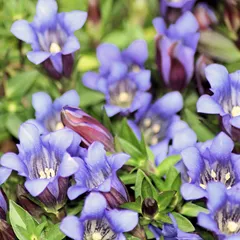
Long Dan Cao is a king ingredient in Long Dan Xie Gan Tang. Like the name indicates, it means it has more power than other ingredients in the formula.
1. Chinese Gentian (Long Dan Cao)
Part used: Dried root and rhizome
Nature: Cold
Taste(s): Bitter
Meridian affinity: GallbladderHeartLarge intestineLiverLung
Category: Herbs that clear Heat and dry Dampness
Long Dan Cao it is extremely effective at draining Excessive Heat from the Liver and Gallbladder and eliminating Damp-Heat from the Lower-Burner.
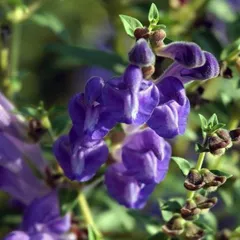
Huang Qin is a deputy ingredient in Long Dan Xie Gan Tang. This means it helps the king ingredient(s) treat the main pattern or it serves to treat a coexisting pattern.
2. Baikal Skullcap Roots (Huang Qin)
Part used: Dried root
Nature: Cold
Taste(s): Bitter
Meridian affinity: GallbladderHeartLarge intestineLungSmall intestineSpleen
Category: Herbs that clear Heat and dry Dampness
Huang Qin works together with Cape Jasmine fruits (Zhi Zi), another deputy in this formula, to assist the key herb (Chinese Gentian) in draining the Fire and eliminating the Dampness.
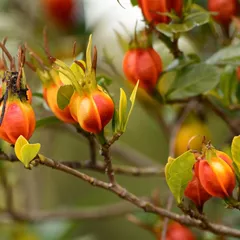
Zhi Zi is a deputy ingredient in Long Dan Xie Gan Tang. This means it helps the king ingredient(s) treat the main pattern or it serves to treat a coexisting pattern.
3. Cape Jasmine Fruits (Zhi Zi)
Part used: Dried ripe fruit
Nature: Cold
Taste(s): Bitter
Meridian affinity: GallbladderHeartLungSanjiao
Category: Herbs that clear Heat and purge Fire and/or clear Summer Heat
In general Zhi Zi's main actions are as follows: "Clears Heat and calms spirit. Drains Damp-Heat affecting the Liver and Gallbladder. Clears Heat in the Blood and stops bleeding. Anti-inflammatory."
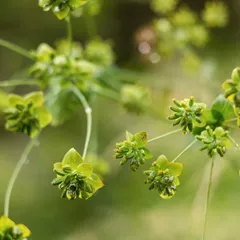
Chai Hu is a deputy ingredient in Long Dan Xie Gan Tang. This means it helps the king ingredient(s) treat the main pattern or it serves to treat a coexisting pattern.
4. Bupleurum Roots (Chai Hu)
Chai Hu disperses Heat caused by stagnating Liver and Gallbladder Qi. It also focuses the actions of the formula's other herbs on the Liver and Gallbladder channels.
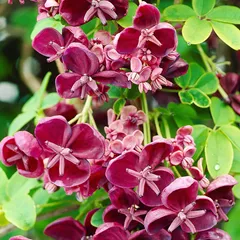
Mu Tong is an assistant ingredient in Long Dan Xie Gan Tang. This means that it either serves to reinforces the effect of other ingredients or it moderates their toxicity.
5. Akebia Stems (Mu Tong)
Part used: Dried stem
Nature: Cold
Taste(s): Bitter
Meridian affinity: HeartLungSmall intestine
Category: Herbs that drain Dampness
Mu Tong works together with Plantain seeds (Che Qian Zi) and Water plantain (Ze Xie), other assistant herbs in this formula, to drain Heat from the Upper Burner and eliminate Damp-Heat from the Lower Burner by promoting urination. This provides a pathway to drain Liver Fire. Because the Liver stores the Blood, Heat in the Liver Meridian can readily injure the Yin and Blood.
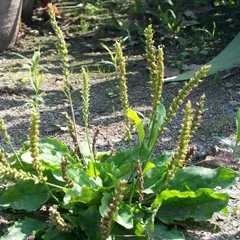
Che Qian Zi is an assistant ingredient in Long Dan Xie Gan Tang. This means that it either serves to reinforces the effect of other ingredients or it moderates their toxicity.
6. Plantain Seeds (Che Qian Zi)
Part used: Dried ripe seeds
Nature: Cool
Taste(s): Sweet
Meridian affinity: KidneyLiverLungSmall intestine
Category: Herbs that drain Dampness
In general Che Qian Zi's main actions are as follows: "Encourages urination and clears Heat. Stops diarrhea by expelling water through urination. Brightens the eyes, used in combination either for Deficiency or Heat. Reduces inflammation of infections. Arrests cough and expectorates Phlegm."
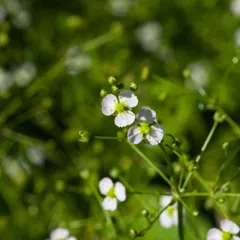
Ze Xie is an assistant ingredient in Long Dan Xie Gan Tang. This means that it either serves to reinforces the effect of other ingredients or it moderates their toxicity.
7. Water Plantain (Ze Xie)
Part used: Dried tuber
Nature: Cold
Taste(s): Sweet
Meridian affinity: BladderKidney
Category: Herbs that drain Dampness
In general Ze Xie's main actions are as follows: "Causes urination and removes Damp-Heat"

Di Huang is an assistant ingredient in Long Dan Xie Gan Tang. This means that it either serves to reinforces the effect of other ingredients or it moderates their toxicity.
8. Unprepared Rehmannia (Di Huang)
Part used: Prepared dried root tuber
Nature: Cold
Taste(s): Sweet
Meridian affinity: HeartKidneyLiver
Category: Herbs that cool the Blood
In general Di Huang's main actions are as follows: "Expels Heat by Cooling Blood. Tonifies Yin by promoting Fluid production. Soothes the Heart by calming Blazing Fire. Cools and nourishes."
In the context of Long Dan Xie Gan Tang, it is used because it supplements the Yin to counteract the effect of the bitter, drying herbs in the formula.
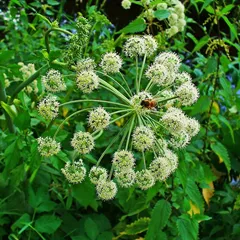
Dang Gui is an assistant ingredient in Long Dan Xie Gan Tang. This means that it either serves to reinforces the effect of other ingredients or it moderates their toxicity.
9. Dong Quai (Dang Gui)
Part used: Dried root
Nature: Warm
Meridian affinity: HeartLiverSpleen
Category: Tonic herbs for Blood Deficiency
Dang Gui nourishes the Blood without causing Stagnation to counteract the effect of the bitter, drying herbs in the formula.

Gan Cao is an envoy ingredient in Long Dan Xie Gan Tang. This means that it directs the formula towards certain area of the body and/or harmonizes the actions of other ingredients.
10. Liquorice (Gan Cao)
Part used: Dried root and rhizome
Nature: Neutral
Taste(s): Sweet
Meridian affinity: HeartLungSpleenStomach
Category: Tonic herbs for Qi Deficiency
In general Gan Cao's main actions are as follows: "Tonifies the Basal Qi and nourishes the Spleen Qi. Clears Heat and dispels toxicity. Moistens the Lungsexpel phlegm and stop coughing. Relieves spasms and alleviates pain. Harmonizes and moderates the effects of other herbs."
In the context of Long Dan Xie Gan Tang, it is used because it harmonizes the Middle Burner and regulate the actions of the other herbs in the formula.
Conditions and patterns for which Long Dan Xie Gan Tang may be prescribed
It's important to remember that herbal formulas are meant to treat patterns, not "diseases" as understood in Western Medicine. According to Chinese Medicine patterns, which are disruptions to the body as a system, are the underlying root cause for diseases and conditions.
As such Long Dan Xie Gan Tang is used by TCM practitioners to treat nine different patterns which we describe below.
But before we delve into these patterns here is an overview of the Western conditions they're commonly associated with:
Spontaneous flow of breast milk Abnormal vaginal discharge Early menstruation Abnormal uterine bleeding Vaginal itching Furuncles Purulent otitis Rhinitis Acute viral hepatitis Acute cholecystitis Acute pyelonephristis Acute cystitis Vulvitis Orchitis Pelvic inflammatory disease Herpes zoster Eczema Conjunctivitis Retinal haemorrhage Haemorrhagic glaucoma Hyperthyroid Cushing's syndrome Adrenal cortex hyperpalsia Polycystic ovaries
Again it wouldn't be correct to say "Long Dan Xie Gan Tang treats spontaneous flow of breast milk" for instance. Rather, Long Dan Xie Gan Tang is used to treat patterns that are sometimes the root cause behind spontaneous flow of breast milk.
Now let's look at the nine patterns commonly treated with Long Dan Xie Gan Tang.
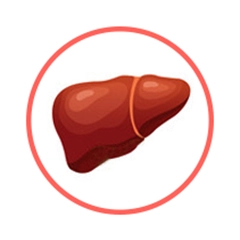
The Liver is a so-called "Zang" Organ. Learn more about the Liver in Chinese Medicine
Damp-Heat in the Liver
Pulse type(s): Rapid (Shu), Wiry (Xian)
Tongue coating: Sticky coating, Yellow coating
Tongue color: Red
Symptoms: Fever Nausea Jaundice Vomiting Dark Urine sticky taste Vulvar sores Poor appetite Vulvar eczema Vaginal itching Menstrual cramps Midcycle bleeding Burning urination Abdominal fullness Urinary difficulty Feeling of heaviness Hypogastrium fullness Hypochondrium fullness Midcycle bleeding pain Irregular menstruation Yellow vaginal discharge Red and swelling scrotum Red and swelling genital Red and swelling papular Bitter taste in the mouth Vesicular skin rashes and itching
Long Dan Xie Gan Tang is sometimes prescribed by TCM practitioners to treat Damp-Heat in the Liver. This pattern leads to symptoms such as hypochondrium fullness, abdominal fullness, hypogastrium fullness and bitter taste in the mouth. Patients with Damp-Heat in the Liver typically exhibit rapid (Shu) or wiry (Xian) pulses as well as Red body with redder sides sticky yellow coating.
This pattern is caused by excessive Heat in the Liver and Dampness due to Spleen Deficiency. Dampness is created if the Spleen's transportation and transformation function is impaired. When Damp-Heat builds up, the flow of Qi is disturbed, resulting in Qi Stagnation symptoms. When lasting for a... read more about Damp-Heat in the Liver

The Liver is a so-called "Zang" Organ. Learn more about the Liver in Chinese Medicine
Stagnant Liver Qi turning into Fire
Pulse type(s): Wiry (Xian)
Tongue color: Red points on the sides
Symptoms: Anger Thirst Red face Red eyes Red lips Insomnia Moodiness Dizziness Headaches Melancholy Depression Dry stools Dense milk Irritability Constipation Heavy periods Abdominal pain Feeling of heat Menstrual cramps Breast distention Outbursts of anger Sore and weak limbs Premenstrual tension Dark menstrual blood Epigastric distension Scanty and dark urine Irregular menstruation Hypochondrial distention Bitter taste in the mouth Feeling of lump in the throat Premenstrual breast distension Feeling of oppression of the chest Distention and pain in the chest and hypochondria
Long Dan Xie Gan Tang is sometimes prescribed by TCM practitioners to treat Stagnant Liver Qi turning into Fire. This pattern leads to symptoms such as hypochondrial distention, epigastric distension, feeling of oppression of the chest and irritability. Patients with Stagnant Liver Qi turning into Fire typically exhibit wiry (Xian) pulses as well as Red on the sides .
This pattern develops from Liver Qi Stagnation, which creates excessive amount of Heat and then turn into Liver Heat. It manifests with a feeling of heat, a red face and desire to drink.
From a mental emotional perspective, patients tend to be irritable, anxious, moody and prone to outbursts of... read more about Stagnant Liver Qi turning into Fire

The Liver is a so-called "Zang" Organ. Learn more about the Liver in Chinese Medicine
Liver Fire Blazing
Pulse type(s): Rapid (Shu), Wiry (Xian), Full (Shi)
Symptoms: Thirst Tinnitus Deafness Red face Red eyes Dizziness Epistaxis Dry stools Dark Urine Haemoptysis Irritability Constipation Haematemesis Outbursts of anger Temporal headaches Dream disturbed sleep Bitter taste in the mouth
Long Dan Xie Gan Tang is sometimes prescribed by TCM practitioners to treat Liver Fire Blazing. This pattern leads to symptoms such as irritability, outbursts of anger, tinnitus and deafness. Patients with Liver Fire Blazing typically exhibit rapid (Shu), wiry (Xian) or full (Shi) pulses.
Many of these symptoms are located in the upper-parts of the body because the nature of Fire is to flare upwards. As such we have the red face and eyes, the temporal headache, dizziness, etc. The headache is typically very intense, throbbing in character and located on the temples or felt in the... read more about Liver Fire Blazing

The Liver is a so-called "Zang" Organ. Learn more about the Liver in Chinese Medicine
Liver Fire insulting the Lungs
Pulse type(s): Wiry (Xian)
Symptoms: Asthma Thirst Red face Headaches Dizziness Constipation Breathlessness Bloodshot eyes Scanty and dark urine Bitter taste in the mouth Cough with yellow or blood-tinged sputum Distention and pain in the chest and hypochondria
Long Dan Xie Gan Tang is sometimes prescribed by TCM practitioners to treat Liver Fire insulting the Lungs. This pattern leads to symptoms such as breathlessness, asthma, distention and pain in the chest and hypochondria and cough with yellow or blood-tinged sputum. Patients with Liver Fire insulting the Lungs typically exhibit wiry (Xian) pulses.
The Liver ensures the smooth flow of Qi, which includes the normal descending of Lung Qi.
Liver-Qi Stagnation, which is necessary for this pattern to develop, causes the feeling of distension of the chest and hypochondrium. If it persists over a long period of time, it can turn into Liver... read more about Liver Fire insulting the Lungs
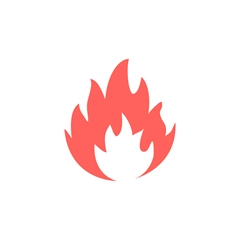
'Heat' as a body pattern in Chinese Medicine is one of the so-called "Eight Principles". Learn more about Heat pattern in Chinese Medicine
Damp-Heat
Pulse type(s): Soggy (Ru)
Symptoms: Acne Fever Thirst Fatigue Hot body Headaches No thirst Dry mouth Dizziness Red urine Joint pain Heavy head Late period Restlessness Loose stools Heavy periods Poor appetite Chest pressure Feeling of heat Sore lower back Vaginal itching Aversion to cold Frequent sighing Vaginal discharge Abdominal fullness Frequent urination Swollen neck glands Abdominal tightness Sore and weak limbs Feeling of heaviness Lower abdominal pain Scanty dark urination Thick menstrual blood Scanty and dark urine Trichomonas infection Irregular menstruation Thermophilus infection Feeling of bearing down Purplish menstrual blood Smelly Vaginal discharge Sticky vaginal discharge Sticky taste in the mouth Bitter taste in the mouth Small clots in menstrual blood Yellow or brown vaginal discharge Stifling sensation in the chest and epigastrium
Long Dan Xie Gan Tang is sometimes prescribed by TCM practitioners to treat Damp-Heat. This pattern leads to symptoms such as fever, swollen neck glands, headaches and stifling sensation in the chest and epigastrium. Patients with Damp-Heat typically exhibit soggy (Ru) pulses.
Within the Four-Levels theory, Damp-Heat is the first level of invasion of External Pathogens, when it still resides in the body's Exterior.
The general symptoms of Damp-Heat are the heaviness of the body and head as well as low temperature fever rising in the afternoon. The patients are not hot on... read more about Damp-Heat
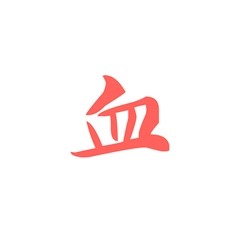
Blood (Xue) is one of Chinese Medicine's vital subtances. Learn more about Blood in Chinese Medicine
Heat in the Blood
Pulse type(s): Rapid (Shu)
Tongue color: Red
Symptoms: Fever Thirst Eczema Anxiety Itching Insomnia Delirium Red face Tinnitus Dry mouth Dizziness Dark Urine Dry stools Dry throat Bloody nose Malar flush Bloody urine Irritability Restlessness Night sweats Constipation Bloody sputum Bloody stools Heavy periods Restlnessness Early periods Cough of blood Abdominal pain Scanty periods Feeling of heat Delirious speech Vomiting of blood Red skin eruptions Dark colored blood Pale color periods Thick menstrual blood Black and tarry stools Thin and watery periods Bitter taste in the mouth Frequent bleeding episodes Trickling blood after period Dark clots in menstrual blood Pre-menstrual breast distention Abdominal distention and fullness Flooding suddenly before schedule Thirst with an inability to swallow Frequent bleeding episodes in stools urine or vomit
Long Dan Xie Gan Tang is sometimes prescribed by TCM practitioners to treat Heat in the Blood. This pattern leads to symptoms such as feeling of heat, red skin eruptions, thirst and frequent bleeding episodes. Patients with Heat in the Blood typically exhibit rapid (Shu) pulses as well as Red tongue.
The most common cause of Heat in the Blood is a Heat Pernicious Influence that has invaded the body and agitates the Blood. This results in accelerated blood flow which manifests itself in a rapid pulse, expanded and damaged Blood vessels and often heavy bleeding. The Blood will be fresh red or... read more about Heat in the Blood

'Heat' as a body pattern in Chinese Medicine is one of the so-called "Eight Principles". Learn more about Heat pattern in Chinese Medicine
Toxic-Heat
Pulse type(s): Rapid (Shu)
Tongue coating: Yellow coating
Tongue color: Red
Symptoms: Pus Fever Boils Sores Eczema Thirst Pustule Coughing Erythema Swellings Carbuncles Dark Urine Sore throat Mouth ulcers Constipation Abdominal pain Swollen tonsils Feeling of heat Lower back pain Perineum swollen Prostate swollen Testicle swollen Red skin eruptions Shortness of breath Yellow vaginal discharge Smelly Vaginal discharge Sticky vaginal discharge Bloody vaginal discharge Five colour vaginal discharge
Long Dan Xie Gan Tang is sometimes prescribed by TCM practitioners to treat Toxic-Heat. This pattern leads to symptoms such as fever, swellings, pus and boils. Patients with Toxic-Heat typically exhibit rapid (Shu) pulses as well as Red tongue with yellow coating.
There are two types of Toxic-Heat. One type is called Toxic-Heat Stagnation, which mainly happens in Channels or other surfaces like skins, throat, lymph or mouth. The symptoms include pain, redness and swollen in throat as well as skin pustule and rush. Acne during teenage time is mainly due to... read more about Toxic-Heat

The Liver is a so-called "Zang" Organ. Learn more about the Liver in Chinese Medicine
Damp-Heat in the Liver Channel
Pulse type(s): Slippery (Hua), Wiry (Xian)
Tongue coating: Thick coating, Yellow coating
Tongue color: Red
Symptoms: Insomnia Dark Urine Restlessness Irritability Vulvar itching Painful intercourse Yellow vaginal discharge Smelly Vaginal discharge Sticky vaginal discharge Excessive vaginal discharge
Long Dan Xie Gan Tang is sometimes prescribed by TCM practitioners to treat Damp-Heat in the Liver Channel. This pattern leads to symptoms such as vulvar itching, yellow vaginal discharge, painful intercourse and restlessness. Patients with Damp-Heat in the Liver Channel typically exhibit slippery (Hua) or wiry (Xian) pulses as well as a red tongue with thick coating, yellow coating.

The Liver is a so-called "Zang" Organ. Learn more about the Liver in Chinese Medicine
Heat Excess in the Liver or Gallbladder
Pulse type(s): Full (Shi)
Tongue coating: Yellow coating
Tongue color: Red
Symptoms: Headaches Dizziness Irritability Short temper Red and sore eyes Painful urination Diminished hearing Swelling in the ears Foul-smelling leukorrhea Bitter taste in the mouth Fixed pain in the hypochondria Shortened menstrual cycle in women Swollen and itchy external genitalia
Long Dan Xie Gan Tang is sometimes prescribed by TCM practitioners to treat Heat Excess in the Liver or Gallbladder. This pattern leads to symptoms such as fixed pain in the hypochondria, headaches, dizziness and red and sore eyes. Patients with Heat Excess in the Liver or Gallbladder typically exhibit full (Shi) pulses as well as a red tongue with yellow coating.
Formulas similar to Long Dan Xie Gan Tang
Jing Jie Lian Qiao Tang is 42% similar to Long Dan Xie Gan Tang
Jia Wei Xiao Yao San is 40% similar to Long Dan Xie Gan Tang
Dan Zhi Xiao Yao San is 40% similar to Long Dan Xie Gan Tang
Xuan Yu Tong Jing Tang is 40% similar to Long Dan Xie Gan Tang
Ba Zheng San is 40% similar to Long Dan Xie Gan Tang
Xue Fu Zhu Yu Tang is 36% similar to Long Dan Xie Gan Tang

